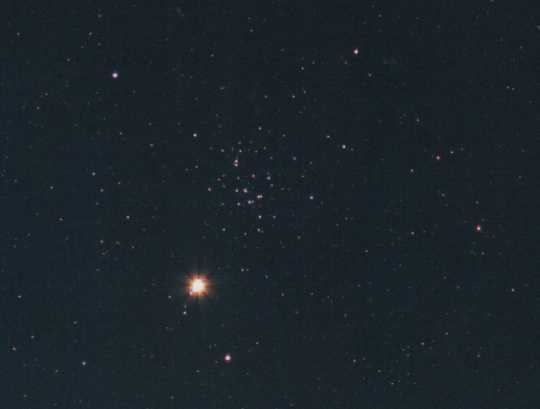Magnitude 3.94 Apparent magnitude (V) 3.94 | ||
 | ||
Similar Gamma Cancri, Alpha Cancri, Beta Cancri, Zeta Cancri, Delta Corvi | ||
Delta Cancri (δ Cancri, abbreviated Delta Cnc, δ Cnc), also named Asellus Australis, is an orange giant star approximately 180 light-years from the Sun in the constellation of Cancer.
Contents
Since it is near the ecliptic, it can be occulted by the Moon and very rarely by planets.
Nomenclature
δ Cancri (Latinised to Delta Cancri) is the star's Bayer designation.
It bore the traditional name Asellus Australis which is Latin for "southern donkey colt". In 2016, the International Astronomical Union organized a Working Group on Star Names (WGSN) to catalogue and standardize proper names for stars. The WGSN approved the name Asellus Australis for this star on 6 November 2016 and it is now so entered in the IAU Catalog of Star Names.
It also has the longest of all known traditional star names, Arkushanangarushashutu, named such by the ancient Babylonians and which means "the southeast star in the Crab".
In Chinese, 鬼宿 (Guǐ Su), meaning Ghost, refers to an asterism consisting of Delta Cancri, Theta Cancri, Eta Cancri and Gamma Cancri. Consequently, Delta Cancri itself is known as 鬼宿四 (Guǐ Su sì, English: the Fourth Star of Ghost.)
Observations
Delta Cancri was involved in the first recorded occultation by Jupiter:
"The most ancient observation of Jupiter which we are acquainted with is that reported by Ptolemy in book X, chap. iii (sic), of the Almagest, ...when the planet eclipsed the star known as (Delta) Cancri. This observation was made on September 3, B.C. 240, about 18h on the meridian of Alexandria."
Delta Cancri also marks the famous open star cluster Praesepe (or the Beehive Cluster, also known as Messier 44). In ancient times M44 was used as a weather gauge as the following Greek rhyme from Aratos' Prognostica reveals:
A murky manger with both stars
Shining unaltered is a sign of rain.
While if the northern Ass is dimmed
By vaporous shroud, he of the south gleam radiant,
Expect a south wind: the vaporous shroud and radiance
The meaning of this verse is that if Asellus Borealis or Gamma Cancris is hidden by clouds, the wind will be from the south and that situation will be reversed if Asellus Australis is obscured. There is some doubt however as to the accuracy of this as Allen notes: "Our modern Weather Bureau would probably tell us that if one of these stars were thus concealed, the other also would be." (Allen, 1898)
But Delta Cancri also acts as more than just a dubious weather guide: it is a reliable signpost for finding the vividly red star X Cancri as Patrick Moore notes in his guidebook Stars of the Southern Skies:
“In the same binocular field with Delta [Cancri] you will find one of the reddest stars in the sky: X Cancri. It is a semi-regular variable; at maximum it rises to magnitude 5 and it never falls below 7.3 so that it can always be seen with binoculars. It looks rather like a tiny glowing coal.”
Delta Cancri also marks the radiant of the Delta Cancrids meteor shower.
In 1876, the possibility of Delta Cancri having a companion star was proposed.
